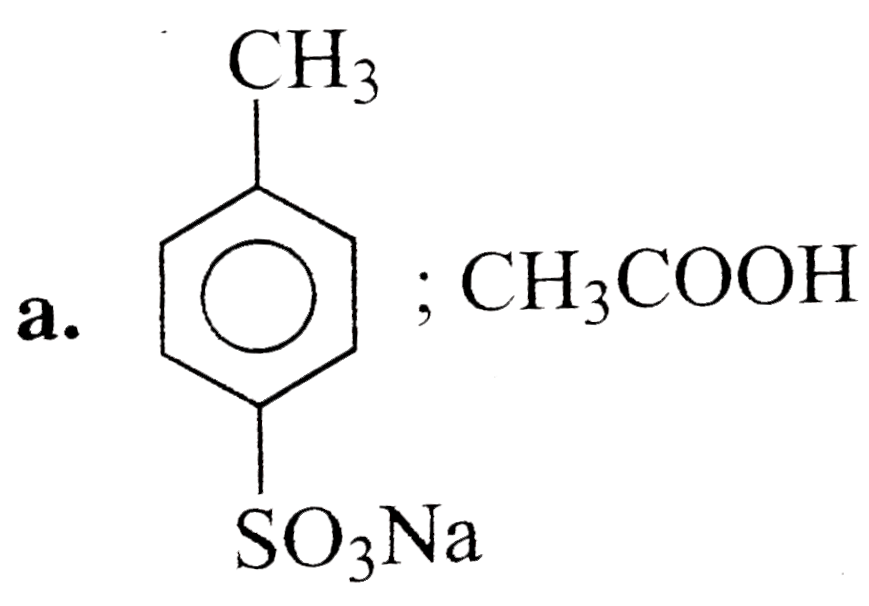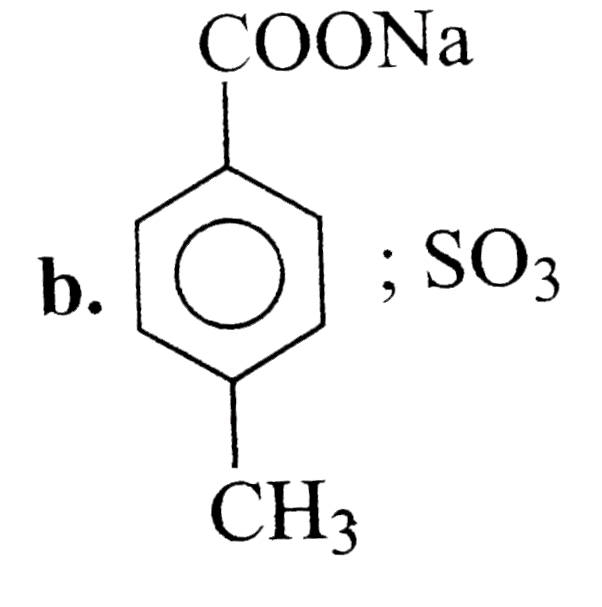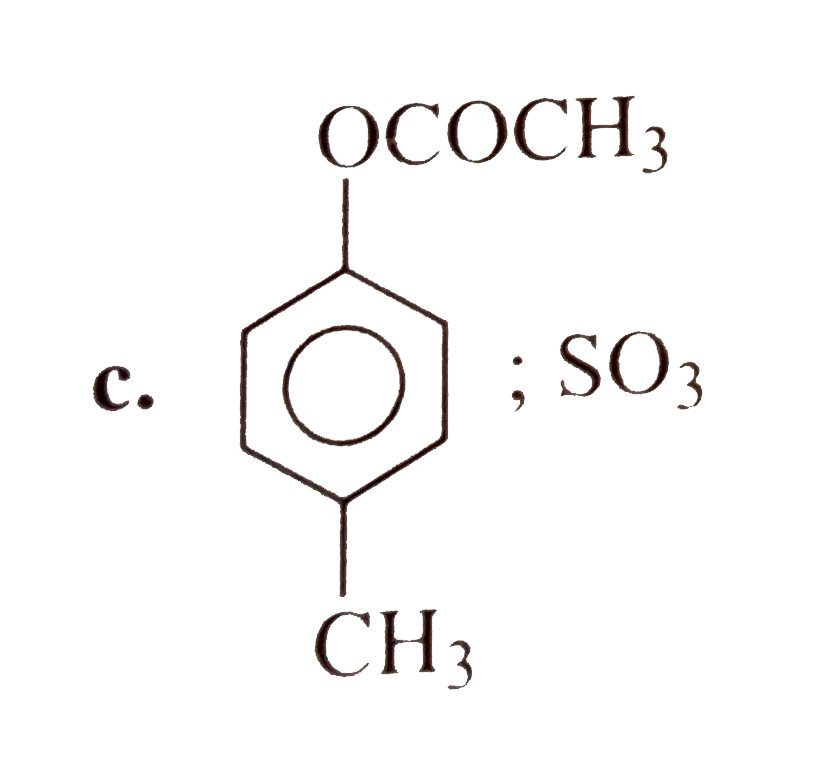4-Methyl benzene sulphoic acid reacts with sodium acetate to give :




The correct Answer is:A
To solve the problem of what 4-methylbenzene sulfonic acid reacts with sodium acetate to give, we can follow these steps:
1. Identify the Reactants:
- The first reactant is 4-methylbenzene sulfonic acid, which has the structure:
- A benzene ring with a methyl group (–CH3) at the para position and a sulfonic acid group (–SO3H) attached.
- The second reactant is sodium acetate (CH3COONa), which consists of an acetate ion (CH3COO-) and sodium ion (Na+).
2. Understand the Reaction Type:
- The reaction between a sulfonic acid and a sodium salt (like sodium acetate) typically leads to the formation of a sulfonate salt and an acid.
- In this case, the sulfonic acid will react with the acetate ion.
3. Write the Reaction:
- The reaction can be represented as:
4-methylbenzene sulfonic acid+sodium acetate→4-methylbenzene sulfonate+acetic acid
- The products formed are:
- 4-methylbenzene sulfonate (C6H4(CH3)(SO3Na))
- Acetic acid (CH3COOH)
4. Final Product Identification:
- The final products of the reaction are 4-methylbenzene sulfonate and acetic acid.
- The sulfonate salt retains the structure of the original sulfonic acid but replaces the hydrogen of the sulfonic acid group with sodium.
5. Conclusion:
- The correct answer to the question is that 4-methylbenzene sulfonic acid reacts with sodium acetate to give 4-methylbenzene sulfonate and acetic acid.
- The first reactant is 4-methylbenzene sulfonic acid, which has the structure:
- A benzene ring with a methyl group (–CH3) at the para position and a sulfonic acid group (–SO3H) attached.
- The second reactant is sodium acetate (CH3COONa), which consists of an acetate ion (CH3COO-) and sodium ion (Na+).
- The reaction between a sulfonic acid and a sodium salt (like sodium acetate) typically leads to the formation of a sulfonate salt and an acid.
- In this case, the sulfonic acid will react with the acetate ion.
- The reaction can be represented as:
4-methylbenzene sulfonic acid+sodium acetate→4-methylbenzene sulfonate+acetic acid
- The products formed are:
- 4-methylbenzene sulfonate (C6H4(CH3)(SO3Na))
- Acetic acid (CH3COOH)
- The final products of the reaction are 4-methylbenzene sulfonate and acetic acid.
- The sulfonate salt retains the structure of the original sulfonic acid but replaces the hydrogen of the sulfonic acid group with sodium.
- The correct answer to the question is that 4-methylbenzene sulfonic acid reacts with sodium acetate to give 4-methylbenzene sulfonate and acetic acid.
Topper's Solved these Questions
- ORGANIC REACTION MECHANISMBOOK - CENGAGE CHEMISTRY ENGLISHCHAPTER - ORGANIC REACTION MECHANISMEXERCISE - True/False
2 Videos
- ORGANIC REACTION MECHANISMBOOK - CENGAGE CHEMISTRY ENGLISHCHAPTER - ORGANIC REACTION MECHANISMEXERCISE - Analytical and Descriptive
6 Videos
- ORGANIC REACTION MECHANISMBOOK - CENGAGE CHEMISTRY ENGLISHCHAPTER - ORGANIC REACTION MECHANISMEXERCISE - Assertion-Reasoning
12 Videos
- NCERT BASED EXERCISEBOOK - CENGAGE CHEMISTRY ENGLISHCHAPTER - NCERT BASED EXERCISEEXERCISE - Chemical Equilibrium
73 Videos
- P-BLOCK GROUP 13 - BORON FAMILYBOOK - CENGAGE CHEMISTRY ENGLISHCHAPTER - P-BLOCK GROUP 13 - BORON FAMILYEXERCISE - Exercise Archives (Subjecive)
9 Videos
Similar Questions
Knowledge Check
23 g of sodium will react with methyl alcohol to give :
Aone mole of oxygenB22.4dm3 of hydrogen gas at NTPC1 mole of H2D11.2 L of hydrogen gas at NTP
When acetic acid reacts with ketene , product formed is :
View SolutionWhat happens when:
Sodium sulphide reacts with lead acetate.
View Solution23 g of sodium will react with methyl alchol to give :
View SolutionHow does acetic acid react with:
Ammonia?
View SolutionWhat happens when:
Sodium sulphate reacts with lead acetate.
View SolutionSodium benzene sulphonate reacts with NaOH and then on acidic hydrolysis, it gives:
View SolutionTo a solution containing equimolar mixture of sodium acetate and acetic acid, some more amount of sodium acetate solution is adde. The pH of mixture solution.
View Solution
